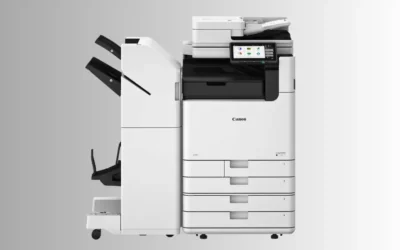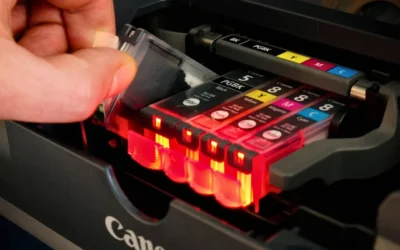What Is Pigment Ink? Benefits, Uses, And How It Transforms Printing
Imagine a full-color print that keeps the color vibrant for decades, is water repellent and anti-aging. Well that’s not a dream, it is the magic of pigment ink. With the world of printing changing rapidly, there is an increasing importance placed on what type of ink you work with and how it can influence your prints.
Due to its properties and benefits, this ink type has changed the game for arts, photography, and business. Learn everything there is to know about pigment ink, its advantages, and how it revolutionized printing across various industries. So, let’s get started!
What is Pigment Ink?
Pigment-based ink consists of tiny solid matter particles suspended in a liquid carrier. The particles are spread across the paper, whereas dyes are mixed with water. This was the only quality that made it waterproof and stronger.
Composition of Pigment Ink:
This ink is a mixture of water, various additives, and either polyester or resin, creating a highly durable solution. Oil-based pigments usually make it waterproof and last much longer. The colorant must either be heated or cooled to obtain this when creating it.
Benefits Of Pigment Ink
To make a well-informed decision for your printing requirements, it’s essential to grasp its advantages. Let’s delve into why this ink stands out and how it can enhance your printing projects:
- Durability and Longevity: This ink’s exceptional durability is a vital advantage. Prints made with it can last for decades without significant fading, making them ideal for archival purposes and professional photography.
- Water and Smudge Resistance: These inks are water-resistant, making them less likely to smudge when exposed to moisture. This property is precious for documents and prints that may come into contact with liquids.
- High-Quality Prints: This ink produces sharp, vibrant prints. The solid particles sit on the paper’s surface, resulting in rich, opaque colors that are less prone to bleeding than dye-based inks.
- Versatility: It is suitable for various surfaces and printing applications. It delivers consistent quality and durability for paper, textiles, and packaging labels.
These benefits highlight why professionals across various fields favor this ink type. Now, let’s explore some specific applications where it truly shines.
Applications Of Pigment Ink
The unique properties of this ink make it an excellent choice for various uses. Let’s explore some of the key areas where this ink truly excels and see how it’s transforming the way we print:
Photography:
Professional photographers prefer this ink for printing photographs due to its color stability and long-lasting qualities. It ensures that photo prints remain vibrant and true to color over time.
Art and Archival Prints:
Artists and archivists use it for fine art prints and important documents. The ink’s resistance to fading and environmental damage makes it ideal for preserving artworks and historical records.
Commercial Printing:
Pigmented ink is used in commercial settings for high-quality, durable prints. It’s common in printing banners, posters, and signs that must withstand outdoor conditions and frequent handling.
These applications demonstrate the versatility and reliability of this ink type, making it a favorite choice across various fields. Next, look at the types of printers that use this ink and why they are the preferred choice for many professionals.
Choosing the Right Pigment Ink Printer
When selecting a printer for this ink, consider the following factors:
- Print Quality: The desired print quality is a crucial factor. Pigmented ink is known for producing sharp, detailed prints, making it ideal for high-resolution images and documents.
- Cost of Ink: While this ink type may be more expensive than dye-based ink, its durability and quality often justify the cost. Consider the long-term benefits and savings from fewer reprints and longer-lasting prints.
- Brand and Model Recommendations: Canon and Epson offer high-quality pigment ink printers. Models such as Canon’s ImagePress and Epson’s SureColor series are known for their excellent performance and reliability.
- Maintenance and Longevity: Proper maintenance of this ink type printers ensures their longevity and optimal performance. Regular cleaning and using genuine ink cartridges can prevent clogging and maintain print quality.
What Printers Use Pigment Ink?
Understanding the types of printers that use this ink type helps highlight its versatility and value across industries. Here are the main categories:
Inkjet Printers:
Inkjet printers are common among professionals. They use pigmented ink to produce sharp, vibrant images and documents. Ideal for photographers, graphic designers, and artists, they deliver excellent detail and color quality.
Wide Format Printers:
Wide format printers, used for large-scale projects like banners and posters, rely on pigmented ink for durability and vibrant color. These printers are perfect for outdoor advertising and large displays, ensuring prints resist fading and environmental wear.
Specialty Printers:
Specialty printers for textiles and packaging use pigmented ink for long-lasting, high-quality prints. In textiles, it provides vibrant, washable colors. In packaging, it ensures labels remain legible and vibrant throughout the product’s lifecycle.
These printer types demonstrate why this ink is highly valued for its consistent, high-quality results on various materials.
Where to Get Pigment Ink Printers?
Finding the right pigmented ink printer is essential for high-quality, durable prints. One trusted supplier is Tenaui Middle East, a leading wholesale distributor in Dubai. They offer a wide range of Canon, Epson, Ricoh printers, and Canon copiers and are the exclusive regional distributor for Canon, Epson, INNOVA, and NORITSU in the Middle East.
Why Choose Tenaui Middle East?
- Wide Product Range: Includes Epson, Canon, and Mitsubishi printers.
- Quality Assurance: Genuine products with top-notch quality.
- Comprehensive Support: From sales to maintenance.
- Cost-Effective: Solutions to enhance efficiency and reduce expenses.
FAQs About What is Pigment Ink
What is the difference between pigment ink and regular ink?
Pigmented ink uses small color particles in suspension, while dye ink dissolves color substances in a liquid. This makes ink more resistant to water and UV light, ensuring longer-lasting prints.
Which ink type is best for printing?
Dye ink is more affordable and vibrant, ideal for everyday use. Pigmented ink is more durable and long-lasting, making it better for professional and archival prints.
Is pigment ink the same as toner?
It is a liquid, whereas toner is a dry powder in laser printers. While toner isn’t as prone to staining as ink, it can become messy if not handled properly.
Wrapping Up:
Pigmented ink has revolutionized the printing industry with its durability, water resistance, and high-quality output. It offers unparalleled professional photography, fine art, and commercial printing benefits.
Knowledge of this ink type and its various uses will enable you to choose the best options for your printing requirements. Visit Tenaui Middle East for a wide range of pigmented ink printers and expert solutions tailored to your requirements.


